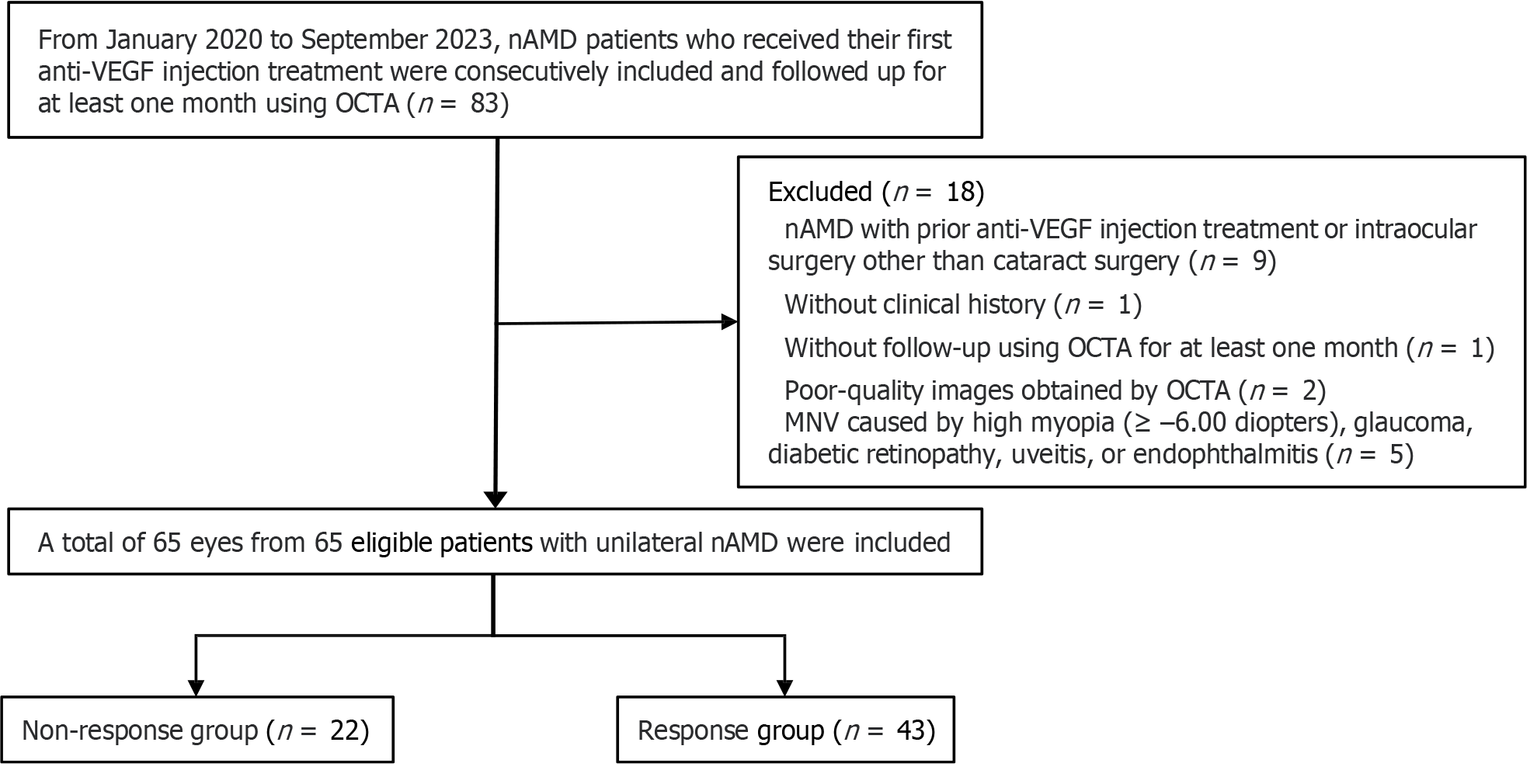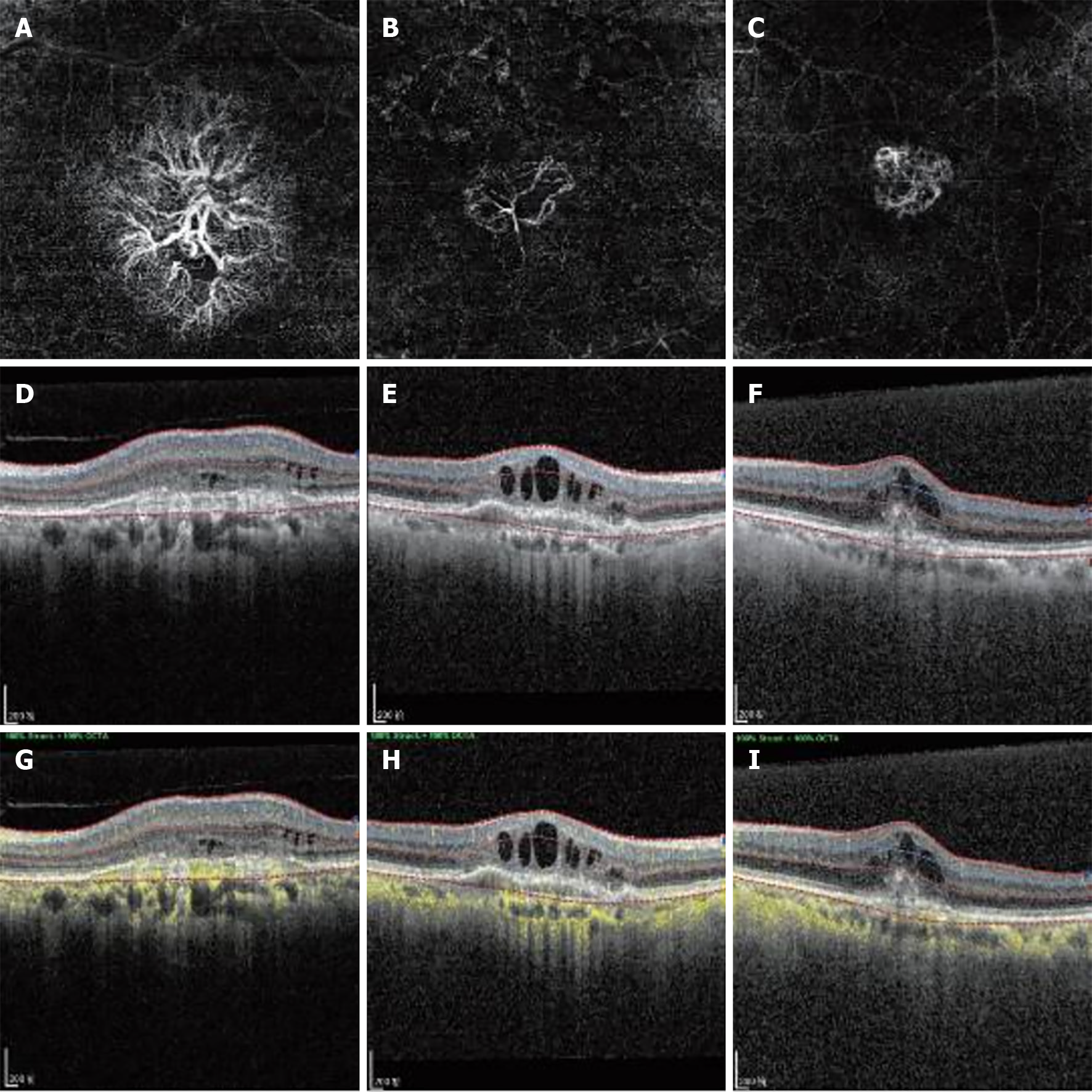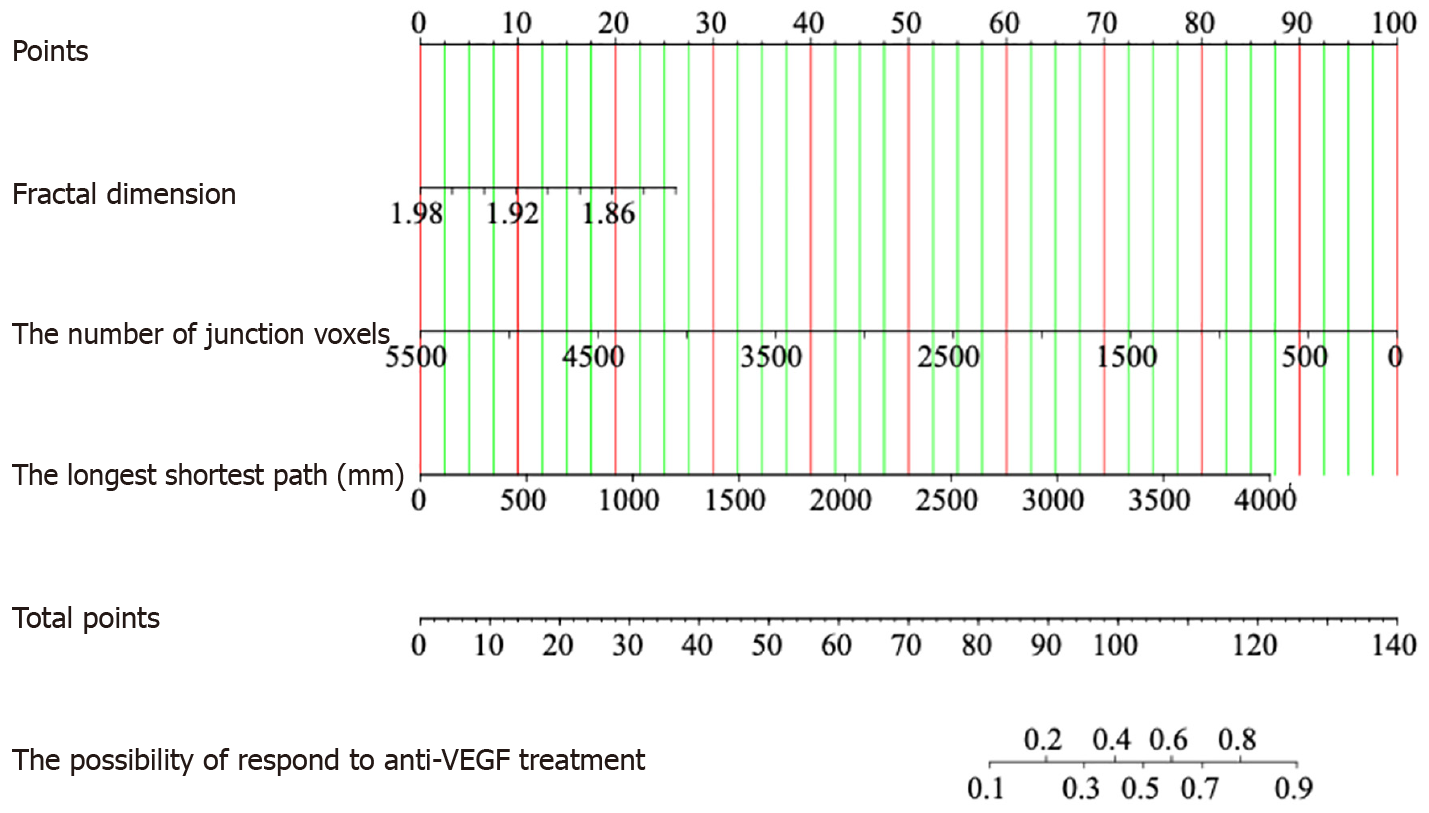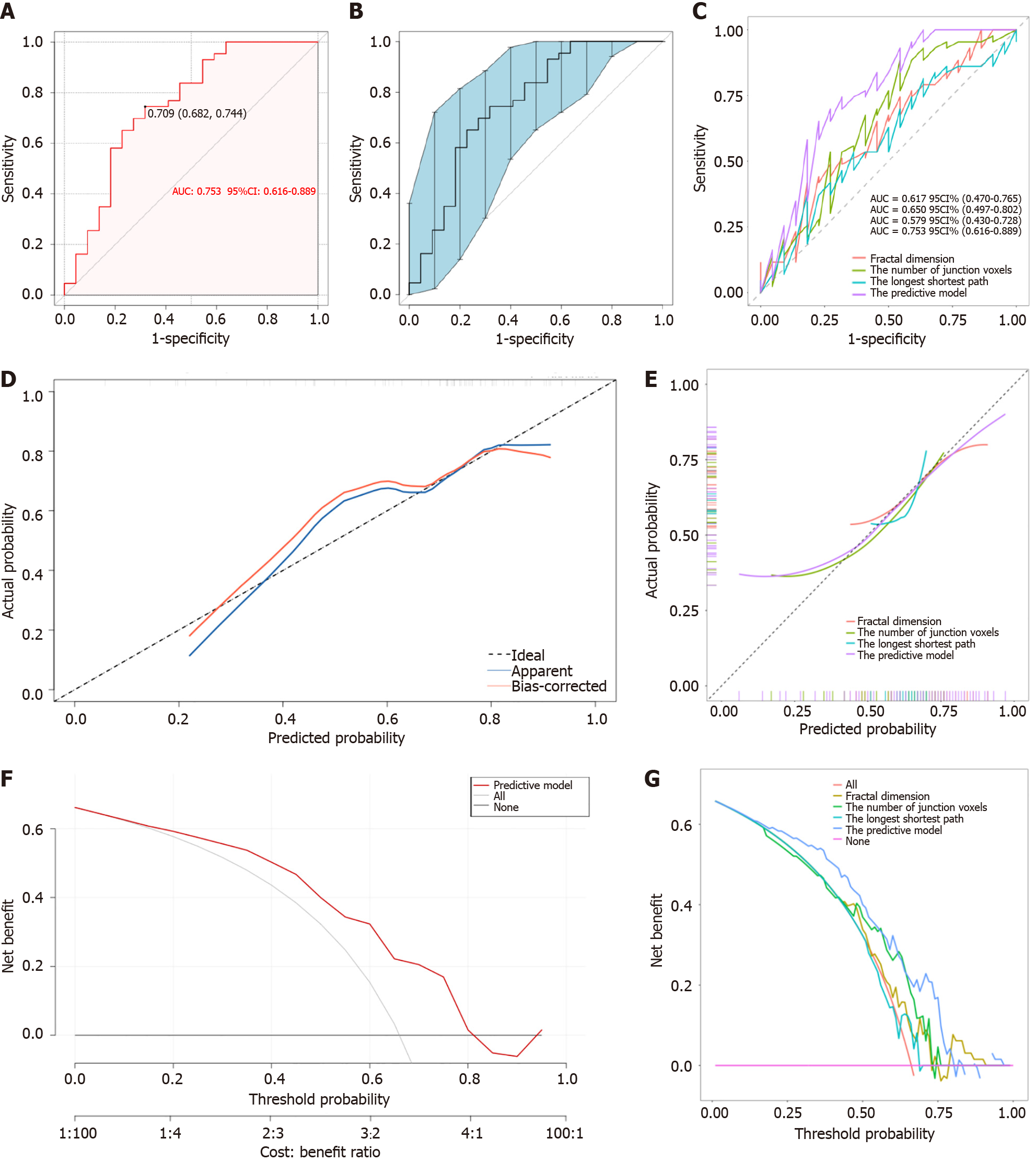Copyright
©The Author(s) 2024.
World J Radiol. Sep 28, 2024; 16(9): 418-428
Published online Sep 28, 2024. doi: 10.4329/wjr.v16.i9.418
Published online Sep 28, 2024. doi: 10.4329/wjr.v16.i9.418
Figure 1 Flowchart of study cohort selection.
NAMD: Neovascular age-related macular degeneration; anti-VEGF: Anti-vascular endothelial growth factor; OCTA: Optical coherence tomography angiography.
Figure 2 Morphological findings of choroidal neovascularization evaluated through qualitative analysis of optical coherence tomography angiography.
A: A 51-year-old female patient with a "medusa" or "sea fan" pattern of choroidal neovascularization (CNV) in the oculus sinister; B: An 85-year-old male patient with a "long linear vessels" pattern of CNV in the oculus dexter; C: A 65-year-old female patient with an "indistinct network" pattern of CNV in the oculus sinister; D-F: Corresponding B-scan images showing the segmentation lines; G-I: Corresponding B-scan images with flow signals.
Figure 3 The constructed nomogram for predicting response to anti-vascular endothelial growth factor therapy.
VEGF: Vascular endothelial growth factor.
Figure 4 A 74-year-old female patient with an "indistinct network" pattern of choroidal neovascularization in the oculus dexter.
A: 3 mm × 3 mm en-face optical coherence tomography angiography image showing the dense small vessels after removal of projection artifacts; B: Corresponding en-face choriocapillaris images were imported into ImageJ software for quantitative measurement of choroidal neovascularization parameters, including fractal dimension; C: End-point voxels in blue, slab voxels in orange, and junction voxels in purple; D: Longest shortest path in red.
Figure 5 Area under the receiver operating characteristic curve, calibration curve, and decision curve analysis for the model predicting anti-vascular endothelial growth factor therapy response.
A: Receiver operating characteristic (ROC) curve for the predictive model; B: ROC curves based on 500 bootstrap re-samples; C: ROC curves comparing different models; D: Calibration curves based on 500 bootstrap re-samples; E: Calibration curves comparing different models; F: Decision curve analysis based on 500 bootstrap re-samples; G: Decision curve analysis comparing different models.
- Citation: Huang ZH, Tu XZ, Lin Q, Tu M, Lin GC, Zhang KP. Nomogram for predicting short-term response to anti-vascular endothelial growth factor treatment in neovascular age-related macular degeneration: An observational study. World J Radiol 2024; 16(9): 418-428
- URL: https://www.wjgnet.com/1949-8470/full/v16/i9/418.htm
- DOI: https://dx.doi.org/10.4329/wjr.v16.i9.418













